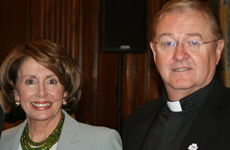Ex-officer claimed British intelligence behind Catholic school attack plo
Posted By: February 22, 2019
Guest Newsdesk. Irish News. Belfast. Thursday, February 21, 2019
Documentary filmmaker Sean Murray who has directed a new documentary, Unquiet Graves – the Story of the Glenanne Gang
A FORMER police officer claimed British intelligence was behind a plot to attack a Catholic primary school during the Troubles.
Sean Murray directed a documentary about the Glenanne Gang which operated in Co Armagh in the 1970s and has been blamed for a series of killings in collusion with rogue members of the security forces.
The story focused on a self-confessed member of the murder gang in the feature-length Unquiet Graves: The Story Of The Glenanne Gang.
Gunmen from the UVF ultimately refused to carry out the attack on the school in Belleeks in Co Armagh, the program makers said.
Details of the planned school attack were previously revealed last summer.
Mr. Murray said: “By far, the most chilling part of creating this documentary was speaking to John Weir in South Africa.
“As a former member of the Royal Ulster Constabulary [RUC] who admitted to being in the Glenanne gang, his claim that the British military intelligence tried to arrange for loyalist paramilitaries to attack a primary school is shocking.”
Mr. Murray said Weir was a loyalist who was imprisoned for killing an innocent Catholic called William Strathearn.
He claimed two gunmen involved in the killing were police agents who did not serve a day in prison.
Weir described alleged plans for loyalist paramilitaries to attack a primary school in retaliation for the Kingsmill massacre of 10 Protestant workmen in Co Armagh by Republicans.
He told the filmmaker the source of the plan was British military intelligence hoping to cause the situation in Northern Ireland to “spiral out of control.”
“Collusion has left a dark and terrible stain on the north of Ireland, the pain that’s been caused to thousands of people here is incredible,” Mr. Murray, below, said.
“If there is ever going to be a healing process on this island, if we’re ever going to move forward in reconciliation, people need to be able to tell their stories, but more importantly we need the truth from the state about their role in the conflict.”
His work was part of a “mosaic” of truth-telling about the violent past.
“This is another square in that mosaic, the Glenanne story,” he said.
“There is a school of thought in transitional justice that you should work from below, it should be victim-centered and my work situates itself in that.”










